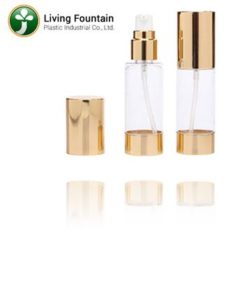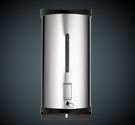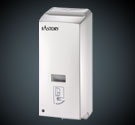In today’s label production, die cutting in most cases is performed in a rotary process. Compared to flat-bed cutting, rotary cutting needs less pre-tension. The material web can be processed continuously and at high speeds. Flexible dies which are put on magnetic cylinders have been established as a standard tool. However, many factors need to be considered to create flawless die-cutting results. This article explains important basics of rotary die-cutting, which can help to prevent cutting problems.
Die-Cutting As The Interaction of Three Components
Label printers and converters need to produce quickly and trouble-free, in order to fulfill their customers’ high demands. Along with the printing quality, the die-cutting result is crucial for success. Very demanding customer needs, continuous developments in the material sector and time constraints – all of these factors make die-cutting a real challenge.
A high-quality die-cutting result principally depends on three components which must be optimally coordinated. These components are the material to be cut, the cutting unit (in rotary cutting in particular the cylinder gap), and the cutting tool. The following notes will introduce all three components in greater detail and explain their importance in successful die-cutting.
Rotary Die-Cutting of Labels – Label Material
First, let us take a look at the material to be cut. An infinite variety of self-adhesive labels are used in all walks of life and workplaces: food & drink, home and personal care products, medicine, pharmaceuticals, retail, office materials, logistics, automotive industry and industrial chemicals – to name just a few. The great variety of applications is a result of the multi-layered structure of the materials.
In the die-cutting process the face material is compressed by the tool’s cutting edge until it bursts. The silicone layer and the backing material should remain undamaged. This kind of cutting is referred to as “kiss-cutting”, and is the main application for self-adhesive label stock. It is also possible to completely cut through the whole material including the liner, for example in the production of perforations (also called “metal-to-metal” cutting).
Material Influences on The Cutting Process
The properties of the material have a considerable influence on the optimum design of the cutting tool: In rotary cutting, the thickness and properties of the liner material along with the gap determine the height of the cutting lines. Sometimes multi-layered materials are also used which require various heights in one tool. The cutting edge geometry (cutting angle, bevel etc.) is adjusted depending on the hardness and compressibility of the material.
Some materials (e.g. thermal papers) are very abrasive and lead to rapid wear of the cutting tool, which in such cases should be provided with a special coating or are laser hardened.
Optimal Cutting Results with Regard to Labels
In the cutting process the question is not only to detach the face material cleanly; detaching the adhesive layer is equally important so as to achieve optimum matrix stripping. The silicone layer and the liner material must remain undamaged, however. Cutting into the liner is classed as quality defects which can lead to problems in further processing of the labels (e.g. in dispensing machines). Moreover, no adhesive should leak from the sides of the labels. If the layers in the label roll stick to each other, considerable malfunctions can arise in the dispensing of the labels.
Apart from visual checking for obvious defects with regard to the dimensions and quality of the outer contours, what is known as an “ink test” is often used in practice to discover any damage to the silicone layer and the liner material. After stripping the matrix and detaching the labels, ink is applied to the liner and evenly rubbed in with a cloth. If the cutting has gone too deep, clear outlines will now appear. The ink test is not suitable for filmic layers, as they are not able to absorb ink. For these materials (like PET), penetration may only be discovered by light reflections from the liner.
Die-Cutting Unit and Gap
In rotary cutting, the material to be cut is passed through the cutting tool and the anvil cylinder in the die-cutting unit. The cylinders and the material web run at the same speed. For a high-quality cutting result, components of the cutting unit must be in perfect condition. The gap is of particular importance in rotary label cutting. To adjust the height of a flexible die perfectly to the material to be cut, the gap must be stated exactly. In Europe a standard gap of 0.480 mm (480 μm) is usual, while in North America 483 μm is common. Wear on the bearer rings and changes in the cylinders can cause the gap to vary considerably in the course of time, so that a satisfactory cutting result may no longer be achievable.
Deviations of ± 2 μm from the standard normally have no negative effects on the cutting result. If the gap is considerably smaller, however, the insufficient distance between the cylinders causes over-heavy cutting. Causes may be worn bearer rings or a fatigued anvil cylinder. If the gap on the other hand is considerably greater than the standard, the gap between the cylinders becomes too great and the cutting result is therefore too light. To compensate for this, a very high cutting pressure must be set; however, this puts a strain on bearer rings and bearings. If the gap varies over the width of the cylinder, the cylinders may be running out of true. There are also often combinations such as an insufficient gap on the drive side at the same time as an excessive gap on the operating side.
The gap and all components of the cutting unit should be checked regularly and measured to guarantee trouble-free die-cutting. Some tool manufacturers offer free gap measurements and also provide professional equipment for this task.
Pretension and Cutting Pressure
Along with the cylinder gap, the amount of the initial pressure (“pretension” or “preload”) in the cutting machine is critical for successful and precise cutting. The pretension needs to be greater than the resulting resistance of the material, which is mainly caused by the transversal lines. Another important factor in the cutting process is heat generation. This is caused by friction between the magnetic cylinder and the anvil cylinder during machine operation. The pressure in the cutting machine increases continuously due to this heat generation. This can lead to the cutting edges penetrating too deeply into the material and damaging the liner and wear is increased on all components involved.
For efficient die-cut processing, the use of a pressure control system can be very helpful. Such systems facilitate the adjustment and control of the cutting pressure. The cutting pressure can be evenly adjusted on both sides of the cylinder by means of pressure cells. If the cylinder generates too much pressure due to thermal expansion, this can be read immediately on the cell’s display.
Magnetic and Anvil Cylinders
The cylinders in the cutting unit are the basis for perfect die-cutting results. Magnetic and anvil cylinders must be manufactured to the highest accuracy. The manufacturing tolerances and concentricity should be only a few microns, otherwise even the most precise flexible die will not function properly. In addition, a sufficient width-circumference-ratio of the cylinder needs to be observed.
If rotary cylinders are sized incorrectly, there is a danger of bending. This applies especially to systems with no bridge and non-supported anvil cylinders. Dynamic forces in the cutting of transversal lines can deform cylinders. As a consequence, the cutting in the middle of the web becomes too light. A rule of thumb for magnetic and anvil cylinders is: The circumference should be at least as great as the maximum working width of the cylinder.
However, the cylinders must not only be very accurate and stable, but should at all times be in a perfectly clean condition. When cleaning magnetic cylinders the use of the right cleaning materials should be strictly adhered to. Some chemicals can attack the adhesive of the magnets, so that the cylinder starts to “bleed”, i.e. adhesive is exuded from the magnets, thus having a negative influence on the cutting result. For the prevention of “bleeding”, one should only use a cleaner which is recommended by a manufacturer, and the cylinders should be oiled with corrosion protection products after use.
The Die-Cutting Tool
Various die-cutting tools are used depending on the application, material and machine type or cutting unit. In order for the tool to be perfectly adapted for the desired purpose, all relevant parameters must be provided with the order.
Thanks to their many advantages, flexible dies in combination with magnetic cylinders have been established as standard in the label business. Flexible dies are not only relatively cost effective, but also shorten the set-up time at job changes, are easily replaced and their storing saves space. In order to guarantee manufacturing tolerances of a few microns, state-of-the-art CNC technology is used. The tool manufacturers offer flexible dies in various qualities and finishing options that are recommended for various applications, depending on the provider.
Often laser hardening is applied, which gives the cutting tip a particular stability and is therefore predestined for cutting through filmic materials in long runs. Special coatings (e.g., with nickel or chromium) protect the cutting lines from wear from abrasive materials and allow long lifetimes. Various non-stick coatings can be used against ink and adhesives residue, so that residues on the cutting edge and die surface are minimized.
On the other hand, solid dies (cutting cylinders) are still the first choice for some applications, e.g. when particularly voluminous materials are processed or punched parts need to be extracted. As a variant of the cutting cylinder, sheeting and slitting cylinders are equipped with interchangeable knives, which are used for tear-off or folding perforations, and other applications.
In contrast to flexible dies, solid dies offer the advantage that they can be repeatedly reworked and resharpened. However, solid dies are considerably more time and cost intensive to manufacture than flexible dies. Moreover, unlike with flexible dies it is not possible to undertake subsequent corrections by turning, shifting or under laying the tool.
Solutions for Cutting Problem
When cutting problems occur, the cause can usually be ascribed to one of the following three components. Therefore, it always makes sense to check the following points first:
- Which material has been cut?
(Type and composition of the material, thickness of the liner, desired application: kiss-cutting and/or cutting-through)
- Are cutting unit and cylinders in a flawless condition?
(Contaminants, wear, stability pretension / cutting pressure, size of gap, sufficient width-circumference ratio)
- Is the cutting tool okay?
(Contaminants, wear, production errors)
In this context, the operator should always recheck the order details. A flexible die can only be manufactured perfectly, if all relevant material and machine specifications are delivered exactly and completely, along with the measurements of the labels.
If you are looking for ideal die cut machine, please don’t miss the website of Smooth Machinery Co., Ltd.. They are the professional flat-bed printing machine and semi-rotary machine supplier in Taiwan. Welcome to check out their product pages to obtain further details about die cut machine series. Feel free to send inquiry or contact with Smooth Machinery.
Article Source: http://narrowwebtech.com/dossiers/basics-of-rotary-die-cutting/






 With years of experiences,
With years of experiences,